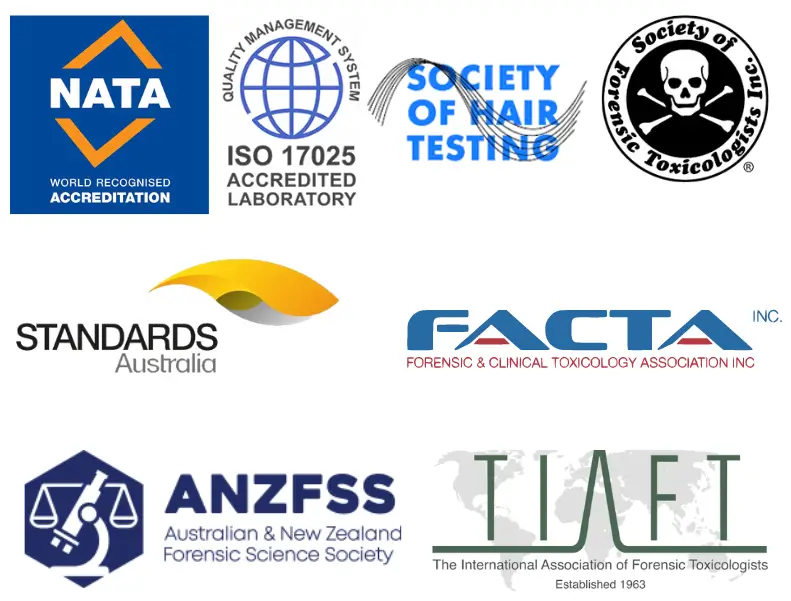Testing Positive For Alcohol Without Drinking
Discover why you may still test positive for alcohol despite having stopped drinking. Explore the various factors that can influence results!
Stopping alcohol consumption is a significant and commendable achievement. However, some individuals who have quit drinking are surprised to receive a positive result for alcohol in a hair test. This can be both confusing and frustrating, particularly for those who are committed to maintaining sobriety.
As a hair testing facility, we understand the concern and confusion this may cause. Several factors could contribute to a positive result despite your abstinence. Let’s explore some of these potential explanations.
1. Residual EtG from Preceding Alcohol Use
Ethyl glucuronide (EtG) is a metabolite of alcohol that can be detected in hair, providing a historical record of alcohol consumption. If you recently stopped drinking, it is possible that the EtG detected in your hair test reflects alcohol consumed before you quit. Hair grows slowly, approximately 0.7 to 1.5 cm per month, and can retain EtG from past drinking episodes. If your alcohol consumption ceased only a few months ago, the hair being tested may still contain EtG from that period.
2. Slow Hair Growth and Dormant (Telogen) Phase
Hair growth occurs in cycles, with some hair follicles in the active growing phase (anagen) while others are in the resting or dormant phase (telogen). During the telogen phase, hair stops growing but remains in the scalp before eventually shedding. This means that EtG from past alcohol use can remain trapped in these dormant hairs for an extended period. If you have slow hair growth or a higher proportion of hair in the telogen phase, it could explain why EtG is still detectable even after you have stopped drinking.
3. Use of Shampoos, Hair Products, and Mouthwash Containing Alcohol
Some personal care products, including shampoos, conditioners, sprays, and mouthwash, may contain alcohol or substances that can result in trace amounts of EtG being deposited onto the hair. Regular use of such products might lead to low levels of EtG being detected in your hair, even if you have not consumed alcohol recently. Mouthwash, in particular, often contains high levels of alcohol and can contribute to EtG presence if used frequently. It is crucial to check the ingredients of any personal care products you use and avoid those that contain alcohol or other related compounds.
4. Contamination from Wearing Old Hats or Other Items
Contamination is another factor that can lead to a false-positive result. If you frequently wear hats, or other head coverings that you used during your drinking period, these items may have absorbed alcohol or EtG. Over time, this EtG could transfer onto your hair, leading to a positive test result. To prevent this, consider replacing or thoroughly cleaning any headwear that you used while drinking.
5. Individual Differences: Why One Person Tests Negative While Another Tests Positive
Even after taking all factors into account, individual differences, especially regarding previous alcohol consumption levels, hair growth rate, and dormant periods, can significantly impact test outcomes. For example, consider two clients, Client A and Client B, who both initially test positive. After three months of abstinence, Client A receives a negative result, while Client B continues to test positive.
Several factors could explain this difference:
Previous Consumption Levels and Timing: Client A may have consumed alcohol less frequently or in smaller quantities before abstaining, resulting in
lower EtG levels in the hair. In contrast, Client B might have had higher levels of alcohol consumption, leading to more substantial EtG deposits that remain
detectable for a longer period, even after cessation.
Hair Growth Rate: Client A may have a faster hair growth rate, leading to the emergence of new, EtG-free hair sooner. This would result in more recent, clean hair being tested. On the other hand, Client B might have a slower growth rate, meaning that the hair sampled could still contain EtG from the period of alcohol consumption.
Dormant (Telogen) Hair Phases: A higher proportion of hair in the dormant phase (telogen) in Client B could mean that older hairs containing EtG from the drinking period are still present and are tested. In contrast, Client A might have fewer hairs in the telogen phase, leading to a quicker turnover of hair and, therefore, a faster decrease in detectable EtG levels.
These factors highlight the complex and individual nature of hair testing, emphasising that differences in alcohol consumption history, hair growth rate, and hair cycles can lead to varying outcomes in test results.
Receiving a positive alcohol test result after you’ve stopped drinking can be deeply frustrating and disheartening. Understanding the factors behind this perplexing outcome can help alleviate some of your confusion. Common reasons include residual EtG markers from previous alcohol use, slow hair growth capturing older data, the use of products containing alcohol like mouthwash, or external contamination. Variations in individual hair growth rates and personal grooming habits can also influence the persistence of EtG in hair samples. If you’re concerned about your results, it’s advisable to consult with a forensic toxicologist who can delve into these contributing factors in much greater detail. Remember, despite the disappointment, a positive test result does not diminish the significant strides you’ve made in your recovery. It might simply indicate that your body needs more time to clear all signs of alcohol and truly reflect your progress with a negative result.
Memberships & Accreditations


